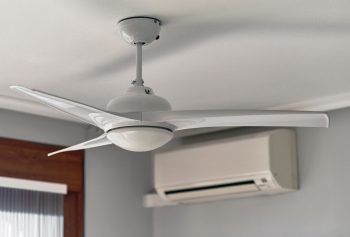
If your washing machine drum isn’t spinning, it could be due to a worn or broken belt. Replacing a washing machine belt might seem daunting, but with the right guidance and tools, it’s a task you can handle on your own. In this comprehensive guide, we’ll walk you through the process and provide you with practical tips to help you successfully replace your washing machine belt.
To put a belt on a washing machine, first disconnect the machine from the power and water supply lines. Remove the access panel and locate the belt. Remove the old belt if it’s still attached. Position the new belt with the groove side facing the pulley and secure it to the drum pulley using a zip tie. Spin the drum clockwise so the belt aligns itself on the pulley. Remove the zip tie carefully without cutting the belt. Test the washing machine to ensure it works properly.
Understanding Washing Machine Belts
The washing machine belt, a 1-inch rubber strap, connects the motor to the drum. This belt allows the drum to spin during the wash cycle. Over time, the belt can wear out or break due to heavy usage or overload. The most common signs that your washing machine belt needs replacing include a burning rubber smell, a squealing noise, and the drum not spinning.
Tools and Materials Needed
To replace a washing machine belt, you’ll need:
- A replacement washing machine belt
- A washing machine belt install tool
- A screwdriver
- A wrench set
- Zip ties
- Paint cans or similar objects
- Gloves
- Old towels
Ensure you purchase the correct washing machine belt that matches your washing machine make and model number. Belts come in different sizes and using the wrong belt can cause damage to your machine.
Safety Precautions
Safety should be your utmost priority when replacing a washing machine belt. Always disconnect the power to the washing machine before starting any work to avoid electric shock. Wear protective gloves as washing machines typically feature sharp edges.
How to Remove the Old Belt
Here’s how to remove the old belt from your washing machine:
- Disconnect the washing machine from the power and water supply lines.
- Remove the access panel on the front or back of the machine.
- Locate the belt.
- Remove the belt cover if your washing machine has one.
- Pull the old belt off of the drum if it’s still attached.
How to Install the New Belt
Once you’ve removed the old belt, you can install the new one:
- Position the new belt with the groove side facing toward the pulley.
- Secure the new belt to the drum pulley using a zip tie.
- Slowly spin the drum clockwise to rotate the pulley. As the drum spins, the belt will align itself on the pulley and become tight.
- Use wire cutters to remove the zip tie. Be careful not to cut the belt.
After replacing the belt, make sure to test the washing machine to ensure it works properly.
Common Mistakes to Avoid
When replacing a washing machine belt, it’s important to avoid these common mistakes:
- Using the wrong type of belt
- Forcing the belt into place
- Not securing the belt properly
- Not testing the machine after replacement
Ensuring Proper Belt Alignment and Tension
To ensure the new belt is properly aligned and tensioned for optimal performance, check the pulley alignment, adjust belt tension, recheck pulley alignment, rotate the system, and monitor belt performance regularly.
By following these steps, you can successfully replace your washing machine belt and ensure your machine operates at its best. However, if you don’t feel comfortable performing these tasks, it’s always best to call a professional.
Frequently Asked Questions
What should I do if the new belt is too tight or too loose?
If the new belt is too tight or too loose, it may not be the correct size for your washing machine. Always ensure you purchase the correct belt that matches your washing machine make and model number. If the belt size is correct, you might need to adjust the motor mount to change the tension.
How often should I replace the belt on my washing machine?
The lifespan of a washing machine belt varies depending on usage and load. However, a typical belt should last for about 5 to 10 years. If you notice any signs of wear or damage before this time, such as a burning rubber smell, a squealing noise, or the drum not spinning, you should replace the belt.
Can I use any screwdriver and wrench set to replace the belt?
You can use any standard screwdriver and wrench set to replace the belt. However, ensure they are in good condition and the right size for the screws and bolts in your washing machine.
What is the role of the zip tie in the belt replacement process?
The zip tie is used to secure the new belt to the drum pulley during installation. Once the belt is properly aligned on the pulley, the zip tie can be cut and removed.
Why do I need to test the washing machine after replacing the belt?
Testing the washing machine after replacing the belt is crucial to ensure that the new belt is properly installed and functioning correctly. If the machine is not working properly after the belt replacement, you may need to adjust the belt tension or alignment.












